Developing the Art of Conversion: Techniques for Growing Your Company In the quick-paced world of digital marketing, it is essential for any company to know how to turn prospective clients into devoted customers. Every stage of the customer journey offers a different chance for interaction and conversion, making it a challenging path that needs to be carefully navigated. From utilizing data analytics and optimizing your website to comprehending the customer journey, this article will examine crucial tactics that can raise your conversion rates. The process that prospective customers go through from the time they learn about a product or service until they make a purchase and beyond is known as the customer journey. Businesses looking to develop successful marketing strategies must comprehend this journey.
Key Takeaways
- Understanding the customer journey is crucial for creating a personalized and effective marketing strategy.
- Utilizing data and analytics can help in identifying and targeting the right audience for marketing campaigns.
- Implementing effective call-to-action techniques can significantly improve conversion rates and drive customer engagement.
- Leveraging social proof and testimonials can build trust and credibility with potential customers.
- Optimizing website and landing pages for conversions is essential for maximizing the impact of marketing efforts.
There are usually multiple stages involved: awareness, consideration, decision, and post-purchase. To effectively engage customers, different strategies are needed at each stage. Potential clients are only now starting to identify their needs or issues during the awareness stage. They might not be familiar with your offerings or brand yet.
Search engine optimization (SEO), social media interaction, and content marketing are relevant in this situation. Businesses can draw attention and direct prospects toward the next phase of their journey by offering insightful and useful information. When consumers enter the contemplation stage, they begin weighing their options and looking for more specific details. Giving them thorough product descriptions, comparisons, and instructional materials that cater to their individual needs is crucial in this situation. Building trust and persuading clients to proceed with a purchase can both be achieved through personalized communication.
Leveraging analytics is essential for focused marketing initiatives in today's data-driven world. Businesses can learn a great deal about the trends, preferences, and behavior of their customers by gathering and evaluating customer data. By using this data, marketers can better target their campaigns to the unique requirements of their target audience, which eventually increases conversion rates. Segmenting data is one efficient method of using it.
| Conversion Strategy | Metrics |
|---|---|
| Targeted Advertising | Click-through rate, conversion rate |
| Website Optimization | Page load time, bounce rate, form completion rate |
| Customer Reviews | Review rating, number of reviews |
| Lead Nurturing | Response time, lead qualification rate |
| Call-to-Action (CTA) Optimization | Click-through rate, conversion rate |
You can develop tailored marketing messages that appeal to each segment of your audience by breaking them up into discrete groups according to their demographics, interests, or purchasing patterns. An apparel retailer might, for example, market classic pieces to an older audience while targeting young adults with trendy styles. This focused strategy raises the possibility of conversion while also increasing engagement. Also, a thorough picture of the customer journey can be obtained by monitoring interactions with them across multiple channels.
One way to determine which marketing channels are generating traffic & conversions is to use tools such as Google Analytics. Businesses can refocus their marketing efforts for optimal impact & more effectively allocate resources by knowing which strategies work best. An effective call-to-action (CTA) is an essential part of any marketing plan. It functions as a prompt to entice potential clients to perform a particular action, such as downloading a resource, making a purchase, or subscribing to a newsletter. Conversion rates can be greatly impacted by how well your CTAs work.
Clarity is essential when crafting effective CTAs. To make it clear what you want the customer to do, use language that is action-oriented. Direct phrases that compel quick action include "Get Started," "Download Now," and "Claim Your Discount.". Users can also be smoothly guided through your website or landing pages by strategically placing calls to action.
Also, visual components are essential to the efficacy of CTAs. By using contrasting colors and leaving plenty of white space surrounding your buttons, you can make sure they stand out. Users can more easily identify the next steps they should take thanks to this visual hierarchy that attracts attention. Investigating various CTA iterations can also reveal what appeals to your audience the most.
A potent psychological phenomenon that affects how people behave as consumers is social proof. Potential buyers are more inclined to trust a brand and buy from it when they see that other people have had good experiences with it. Conversions and credibility can be greatly increased by utilizing social proof in the form of case studies, reviews, and testimonials.
A positive feedback loop that draws in new business can be produced by encouraging pleased customers to post reviews on websites like Google, Yelp, or social media. Potential customers can feel more confident about the caliber of your products if you prominently display these testimonials on your website or landing pages. Video testimonials are also a good option because they give a more intimate touch and let prospective clients interact with actual clients who have used your goods or services. Building trust can also be achieved by presenting case studies that demonstrate successful results.
You can give concrete proof of your product or service's efficacy by describing how it helped customers with particular issues. In addition to enhancing credibility, this aids prospective clients in seeing how your products could help them. Since your website is the online storefront for your company, conversion optimization is crucial.
This entails making sure the site loads quickly, responds to mobile devices, and is simple to navigate. Make the layout of your website simpler first. A disorganized layout may overwhelm users and cause them to give up before converting. Employ succinct text, distinct headings, and captivating images to establish a welcoming environment that promotes exploration. Make sure crucial information is also readily available so users can locate it without having to do a lot of searching.
When it comes to conversion optimization, landing pages are especially important. These pages ought to be customized for particular offers or campaigns and contain targeted content that fits the user's intent. To successfully increase conversions, use persuasive components like compelling CTAs, eye-catching images, and bullet points outlining the main advantages.
Resolving problems is only one aspect of providing exceptional customer service; another is establishing satisfying interactions that promote repeat business and loyalty. Customers are more likely to convert & refer your brand to others when they feel appreciated & supported along the way. To provide top-notch support, you must invest in training your customer service representatives.
Assemble the skills and information necessary to enable them to respond to questions in a timely manner. Also, think about providing a variety of support channels, including phone, email, and live chat, so that clients can select the one that works best for them. Also, proactive customer support can improve the whole experience.
After a customer makes a purchase, follow up with them to make sure they are satisfied & to address any issues they may have. This not only shows that you care about their success, but it also creates opportunities for cross-selling or upselling. One of the best strategies for keeping clients and nurturing leads is still email marketing. Businesses can stay in constant contact with their audience and promote repeat business by creating an email list and launching targeted campaigns.
Sort your email list first according to consumer preferences or behavior. Sending tailored messages that appeal to each group is made possible by this. You could, for example, send exclusive deals to devoted clients while offering new subscribers who are still in the contemplation stage informative materials.
After a purchase, follow-up emails are especially beneficial. Including a thank-you note & suggestions for related products can improve the client experience & boost sales. Also, think about putting in place automated email sequences that gradually nurture leads; this keeps your brand at the forefront of consumers' minds and boosts conversion rates. Monitoring and evaluating important metrics on a regular basis is crucial to ensuring continued success in increasing conversions.
Making data-driven decisions that improve your marketing efforts is made possible by knowing how well your strategies are working. The performance of your company can be better understood by looking at key performance indicators (KPIs) like conversion rate, bounce rate, average order value, and customer lifetime value. Trends & areas for improvement can be found by tracking these metrics over time. An additional useful technique for improving conversion tactics is A/B testing.
You can find out which aspects of landing pages, call-to-actions, or email campaigns your audience responds to the most by testing various iterations. You can continuously improve your strategies and increase your conversion rate with this iterative approach. Conclusion: To master the art of conversion, one must take a multifaceted approach that includes understanding the customer journey, using data analytics, putting effective calls to action (CTAs) into place, leveraging social proof, optimizing websites, offering outstanding customer service, using email marketing, & monitoring metrics for ongoing improvement. Businesses can increase their conversion rates & create enduring relationships with their clients by implementing these tactics.
Take action now by comparing your present marketing tactics to these guidelines & pinpointing areas that need work. Put these strategies into practice right now to begin observing noticeable improvements in your conversion rates!
If you are looking to optimize your plumbing conversion rates, you may also be interested in learning about HVAC influencer marketing in El Monte, California. Influencer marketing can be a powerful tool for reaching new customers and increasing brand awareness. Check out this article on HVAC influencer marketing in El Monte, California to see how it can benefit your plumbing business.
FAQs
What is plumbing conversion optimization?
Plumbing conversion optimization refers to the process of improving a plumbing company's website and online marketing strategies to increase the number of visitors who take a desired action, such as scheduling a service or contacting the company for more information.
Why is plumbing conversion optimization important?
Plumbing conversion optimization is important because it helps plumbing companies maximize the effectiveness of their online presence, ultimately leading to more leads and customers. By optimizing their website and marketing efforts, plumbing companies can increase their conversion rates and grow their business.
What are some strategies for plumbing conversion optimization?
Some strategies for plumbing conversion optimization include improving website design and user experience, creating compelling and relevant content, implementing clear calls-to-action, utilizing targeted advertising, and optimizing for local search.
How can plumbing companies measure the success of their conversion optimization efforts?
Plumbing companies can measure the success of their conversion optimization efforts by tracking key performance indicators such as website traffic, conversion rates, lead generation, and customer acquisition. Additionally, tools like Google Analytics can provide valuable insights into user behavior and website performance.
What are the benefits of plumbing conversion optimization?
The benefits of plumbing conversion optimization include increased lead generation, improved customer acquisition, higher return on investment for marketing efforts, and a more competitive online presence. By optimizing their conversion rates, plumbing companies can ultimately grow their business and increase their revenue.






